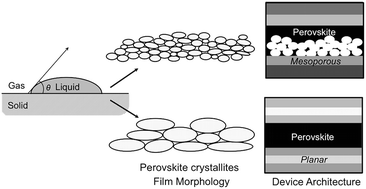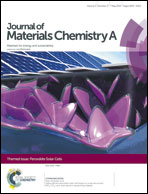Perovskite-based solar cells: impact of morphology and device architecture on device performance
Abstract
Organic–inorganic metal halide perovskites have recently shown great potential for application in solar cells with excitingly high performances with an up-to-date NREL-certified record efficiency of 20.1%. This family of materials has demonstrated considerable prospects in achieving efficiencies comparable to or even better than those of thin film solar cells. The remarkable performances thus far seem not to be limited to any specific device architecture. Both mesoscopic and planar cells showed good device performance and this eventually leads to the inevitable comparison between both architectures. Regardless of device architecture, device performance is highly dependent on the film morphology. The factors influencing the film morphology such as the deposition method, material composition, additives and film treatment will be discussed extensively in this review. The key to obtaining good-quality film morphology and hence performance is to essentially lower the energy barrier for nucleation and to promote uniform growth of the perovskite crystals. A comparison of the material selection for various layers as well as their corresponding impact on the perovskite film and device behavior in both device architectures will be presented.

- This article is part of the themed collections: JMC A Top Picks collection: Harnessing the power of the sun and Perovskite Solar Cells

 Please wait while we load your content...
Please wait while we load your content...